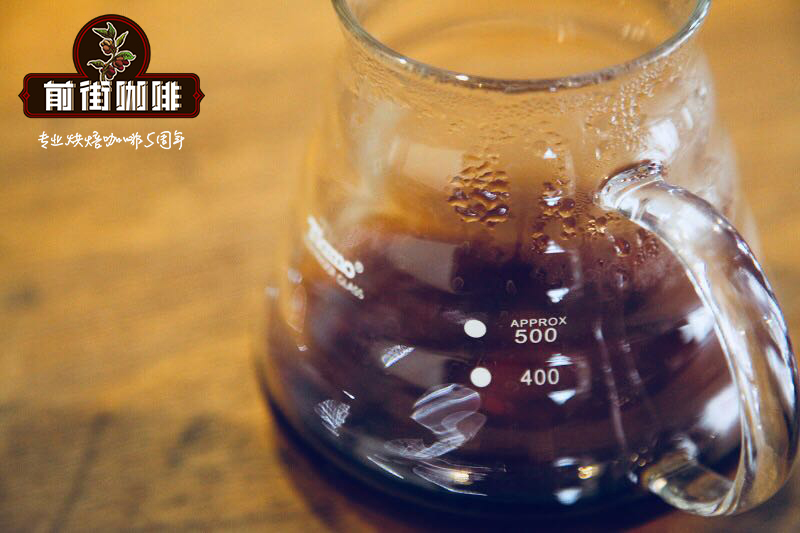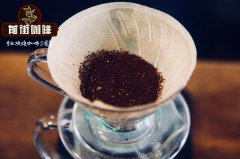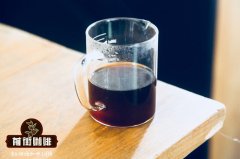Guatemala San Pedro Necata coffee how to make _ Guatemala hand coffee is too bitter?

Professional coffee knowledge exchange more coffee bean information please follow the coffee workshop (Wechat official account cafe_style)
In recent years, high-quality coffee in Guatemala has emerged one after another and enjoys a very high status in the boutique coffee market. Unique climate and geographical factors have created a good reputation of Guatemalan coffee for a long time. The high-altitude terrain of the mountains of Guatemala, the temperature is relatively low, to a certain extent, slowed down the growth rate of coffee fruit, such a relatively slow ripening process, so that the fruit can fully absorb nutrients. In this way, the coffee beans have higher hardness, changeable flavor, rich layering and mellow smoothness. The San Pedro Necata, Guatemala coffee introduced today, whose estate is located on the border between the Vivette Nango region of northern Guatemala and Mexico, is one of the most popular coffee growing areas in Guatemala.
Guatemalan coffee San Pedro Necata
Producing area: San Pedro Necta town, Vivette Nango area
Responsible person: Victor Hugo Herrera Laparra
Varieties: bourbon, Tibika, Kaduai
Harvest time: December-April of the following year
Altitude: 1400m--1529m
Grade: SHB
Treatment: washing
Cup test information: grapefruit, litchi, mango sweet, dark chocolate back sweet, long-lasting flavor.
Baking degree: medium +-medium depth
As can be seen from the information of coffee beans, this coffee is a classic American blend. Bourbon and Tibica are inherent native varieties of Arabica, commonly known as "old tree species", while Kaduai is a high-quality variety derived from the artificial cross between the natural variant "New World" (Mondonovu) and Kaddura. Three high-quality varieties ensure that this coffee is both special and delicious.
How to make Guatemalan coffee [San Pedro Necata micro batch]?
Front Street Coffee hand reference: weigh 15g [San Pedro Necta micro batch] coffee powder, pour into a grinder to grind moderately, the ground particles are slightly thicker than salt, we use BG bean grinder to scale 5R (standard sieve pass rate 60%), water temperature 89 degrees, V60 filter cup extraction.
The hot water in the hand flushing pot draws a circle clockwise with the center of the filter cup. Start the time when brewing, brew the coffee to 30g in 15 seconds, then stop the water injection, and when the time is up to 1 minute, the second water injection. The second water injection is the same as before, draw a circle clockwise with the center of the filter cup, and the water flow should not rush to the place where the coffee powder is connected with the filter paper, so as not to produce channel effect.
Coffee powder to the outermost circle to set aside a circle, and then another circle to the middle, 2 minutes 20 seconds, to the coffee to 220g, brewing coffee is finished.
| Japanese Ice hand Flushing [San Pedro Necata Micro batch]
Qianjie coffee ice hand brewing [San Pedro Necata micro batch] reference:
Guatemalan coffee [San Pedro Necata micro batch], light medium roasting, BG bean grinder scale 5m (standard sieve pass rate 67%)
20 grams of powder, 150 grams of ice, 150 grams of hot water. The water temperature is 90 ℃ higher than the recommended normal hand flush, then 1 ℃ higher, normal grinding small Fuji 3.5 scale, ice hand flushing is slightly thinner half grid-small Fuji 3 scale.
The amount of steaming water is 40 grams and the steaming time is 30 seconds.
Water injection by stages, 60 grams of water in the first section and 40 grams of water in the second section. Use a thin but high water injection column and stir hard to make the coffee powder fully tumble, but be careful that the water level is not too high and do not rush to the edge of the filter paper.
The whole extraction time is about two and a half minutes (close to the normal extraction time of 20 grams of powder).
END
Important Notice :
前街咖啡 FrontStreet Coffee has moved to new addredd:
FrontStreet Coffee Address: 315,Donghua East Road,GuangZhou
Tel:020 38364473
- Prev

EL SOL Manor in Guatemala Vivette Nan Fruit Coffee is not astringent.
Professional coffee knowledge exchange more coffee bean information please follow the coffee workshop (Wechat official account cafe_style) Guatemala Chimaltenango Ojo del Sol Natural Guatemalan coffee Ojo del Sol is the Spanish word for "The Eye of Sun" meaning: Guatemala Ojo del Sol Natural breed: wave
- Next

Introduction to the operation of orange honey treatment at Santa Ferrisa Manor in Guatemala-is Akernango Coffee good?
For more information about coffee beans, please follow the Coffee Workshop (official Wechat account cafe_style) about Guatemalan Coffee Manor-Santa Felisa Manor, founded by Mr.Trinidad E.Cruz in Akanango, a famous producing area in Guatemala. So far, the manor has entered the fourth generation of operation, run by Antonio and Anabella brothers and sisters.
Related
- Detailed explanation of Jadeite planting Land in Panamanian Jadeite Manor introduction to the grading system of Jadeite competitive bidding, Red bid, Green bid and Rose Summer
- Story of Coffee planting in Brenka region of Costa Rica Stonehenge Manor anaerobic heavy honey treatment of flavor mouth
- What's on the barrel of Blue Mountain Coffee beans?
- Can American coffee also pull flowers? How to use hot American style to pull out a good-looking pattern?
- Can you make a cold extract with coffee beans? What is the right proportion for cold-extracted coffee formula?
- Indonesian PWN Gold Mandrine Coffee Origin Features Flavor How to Chong? Mandolin coffee is American.
- A brief introduction to the flavor characteristics of Brazilian yellow bourbon coffee beans
- What is the effect of different water quality on the flavor of cold-extracted coffee? What kind of water is best for brewing coffee?
- Why do you think of Rose Summer whenever you mention Panamanian coffee?
- Introduction to the characteristics of authentic blue mountain coffee bean producing areas? What is the CIB Coffee Authority in Jamaica?

